The Physicality of History
On this weeks blog, we have a story written by another good friend of mine whom I've known for many years now, Kyle Timmons. He recently became the Corporal of the 17th Infantry with his years of reenacting experience behind his belt combined with the real life knowledge of a Combat Medic with National Guard of Pennsylvania. Like many, the love of history propelled Mr. Timmons to join the National Park Service in 2016, continuing to educate those in history, for the benefit of future generations. If you've ever wondered what it was like to live in the history world all year round, continue reading...
- Mary Sherlock,an attached follower of the 17th Regiment of Infantry.
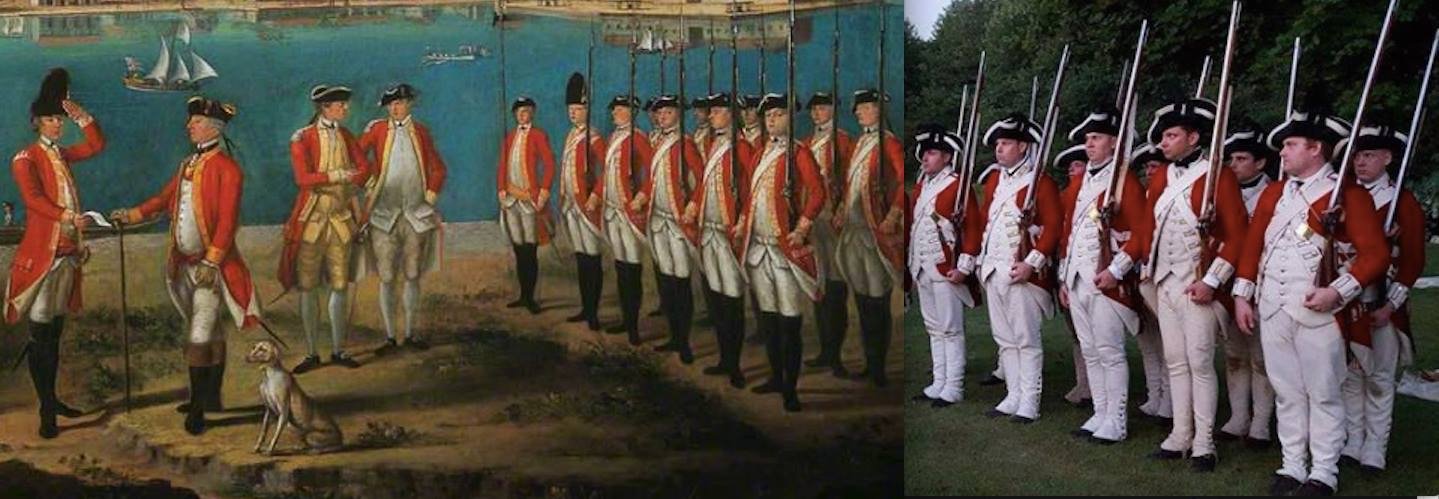
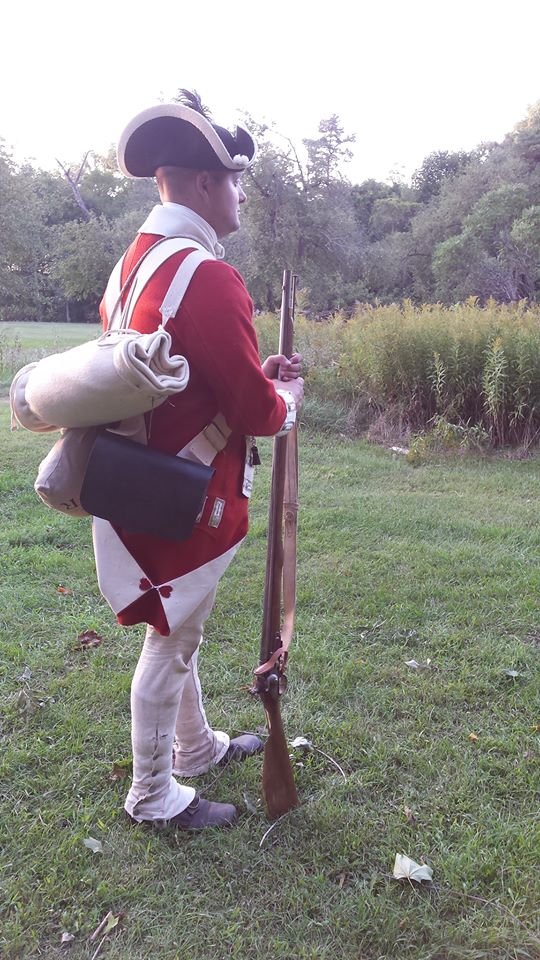 The bitter cold of a Valley Forge winter. The parched heat of a Monmouth Summer. The fatigue of an all-night forced march. The smell of gunpowder and the weight of a Short Land Pattern Musket. These are all things you hear about when people bring up The American War of Independence. You can envision the half-starved soldier standing picket at Valley Forge, or of that same soul struggling through the night to put one foot in front of another on a forced march. TV and the internet make it easy to visualize the Revolution. It’s another entirely to experience it.
The bitter cold of a Valley Forge winter. The parched heat of a Monmouth Summer. The fatigue of an all-night forced march. The smell of gunpowder and the weight of a Short Land Pattern Musket. These are all things you hear about when people bring up The American War of Independence. You can envision the half-starved soldier standing picket at Valley Forge, or of that same soul struggling through the night to put one foot in front of another on a forced march. TV and the internet make it easy to visualize the Revolution. It’s another entirely to experience it.
I’ve been a reenactor for about 12 years now, and I’ve been with the 17th since it’s reformation at the end of 2014. When I started, I knew virtually nothing about the Revolution except what middle school and “The Patriot” showed me. Since then I’ve learned A LOT through reading texts on the subject like McGuire’s “The Philadelphia Campaign” Volumes I and II, Spring’s “With Zeal and With Bayonets Only,” or Don Hagist’s “Wenches, Wives, and Serving Girls.” All of which in their different way help to paint the picture of America in the time of the War of Independence. Each is invaluable to my understanding of the period. But something is missing. Try as you might with creative use of adjectives and alliteration, you can’t feel the written word. General Cornwallis’ Flanking Column’s long march of September 11th 1777 at Brandywine has no context if you have no idea what it feels like to BE A SOLDIER OF THE 18TH CENTURY.
So what’s that like? I’m glad you asked!
In the 10 months or so from our first sewing party to our first official event in September 2015 we equipped 15 infantrymen. Each man was equipped with what the typical infantrymen wore on campaign. That is, a white linen shirt with ruffles sewing into the neck slit, a wool waistcoat, linen “gaitered trouser” that covers the shoes and hold them to the feet with a straps, a wool broadcloth regimental pattern coat with the regiment’s facing color, lace and buttons designating its wearer as a soldier of the 17th, a velvet and linen neckstock approximately the height of the soldier’s neck, and finally a felt cocked hat of the military fashion. All of these items are made to fit the man within and are quite comfortable, but the feel is definitely different from modern clothing. Now that you’ve got all this on let’s kit you out with the tools of the trade.
Over all of this comes your bayonet belt with your 14 inch bayonet slung over your right shoulder, on your other shoulder belt is your cartridge pouch loaded down with 21 cartridges, your tin canteen full of water, a haversack with three days of food stuffed in it, all of your earthly possessions rolled up in your blanket slung over your back, and of course your 11 pound musket. Once you get it all on you start to realize some things that a book doesn’t really tell you. You find that the cut of the coat and waistcoat kind of force you to stand somewhat straighter than usual and a brand new neckstock doesn’t like when you try to turn your head in any direction until you’ve sweated in it a few days and softened up the buckram layer that stiffens it. After your first hour in full kit the cross belts start to dig into your shoulders a bit and might further discomfort your neck. Ironically, you find that that heavy wool coat your wearing breaths rather well and isn’t nearly the death trap everyone said it was!
Now that you’ve got the clothes and the gear on, it’s time to actually do something! One of our events in 2015 was an “Immersion Event” in Virginia. What that means is we leave EVERYTHING from the modern world in the cars, there’s no public to view us, and for all intents and purposes we are going into the 18th century for 48 hours. This was in October or November and it was cold. The scenario was that we were to cover a fording point on a creek so forage parties could move back and forth.
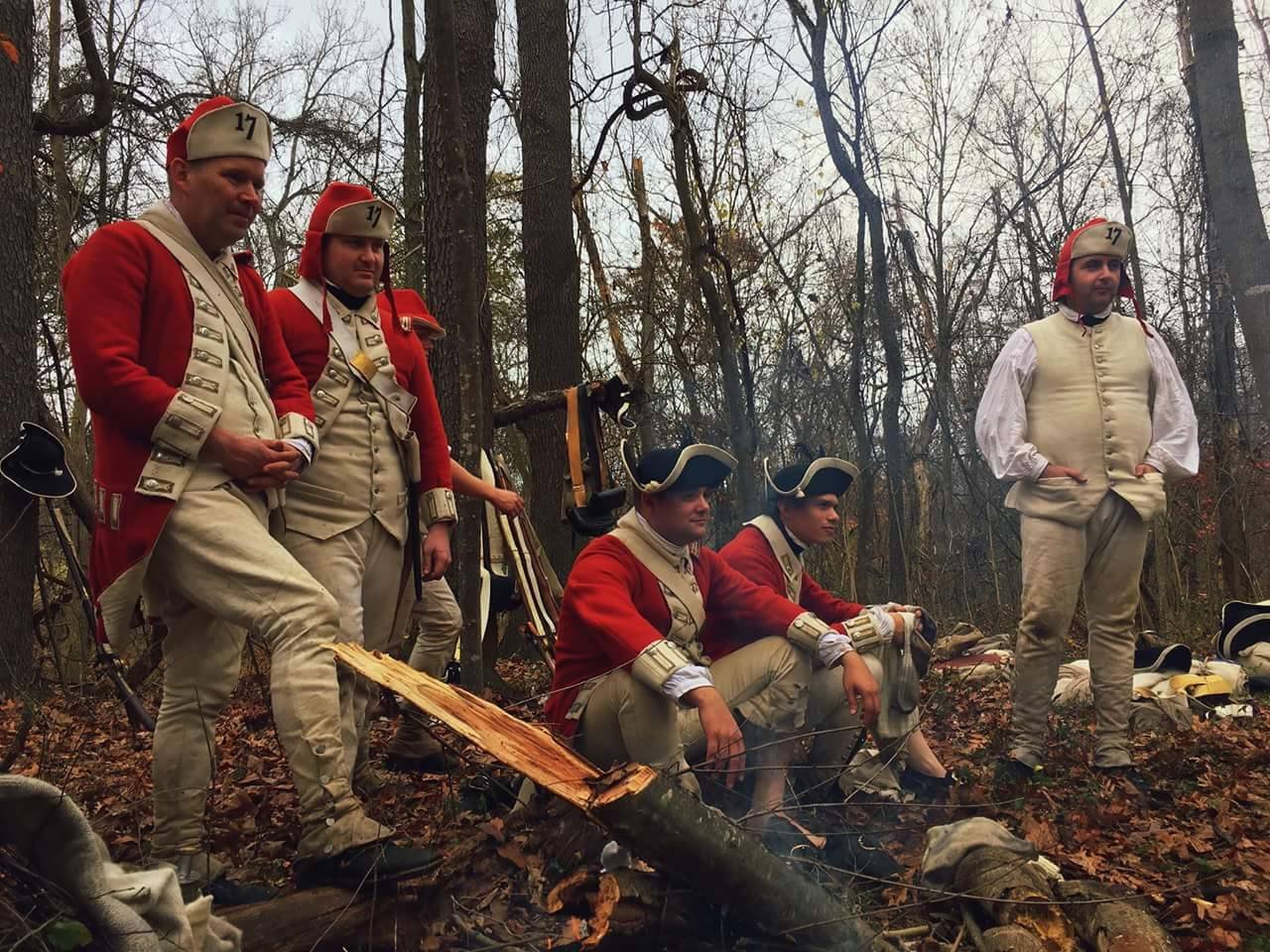
We marched at dawn to the creek in question and as we forded it we took fire from rebels who were some 100-150 yards away atop a hill. Well, we dashed across the creek, consolidated our forces, and sprinted across the open ground to cover at the base of the hill. The handful atop the hill, not willing to meet British steel that morning, wisely yielded the ground. We climbed to the top of the hill and secured it. THEN began the work. We posted about half our number on piquet while the rest set to work felling trees for crude defensive barriers, wood for fires to cook our food and to dry our stockings and feet, and of course we built wigwams to shelter in that night.
That initial skirmish was the only real fight the entire day. The rest of the day we spent on work parties, standing picquet, or on patrols looking for rebel militia we knew to be in the area. When night fell so did the temperature and it began to rain. Greaaaaaat! Due to our limited numbers and the number of guard posts we had it was necessary for all of our men to take 2 separate 2 hour shifts on picquet. It absolutely sucked. It was hard to see anything more than 30-40 yards out and you knew that if the militia were out there you couldn’t see them. The wind was blowing too, which cut right through our coats. Some of our men shirked their duty to shelter around a small fire and nearly got caught by one of our sergeants. Thankfully, the rebels left us alone that night.
The next morning we ate our rations, drank black coffee done over the fire and broke camp. Everyone was in a foul mood by and large. We were tired, still kind of wet, and uncomfortable. The second time across the creek was done without a complaint because we knew we were marching to the cars. And then it was over.
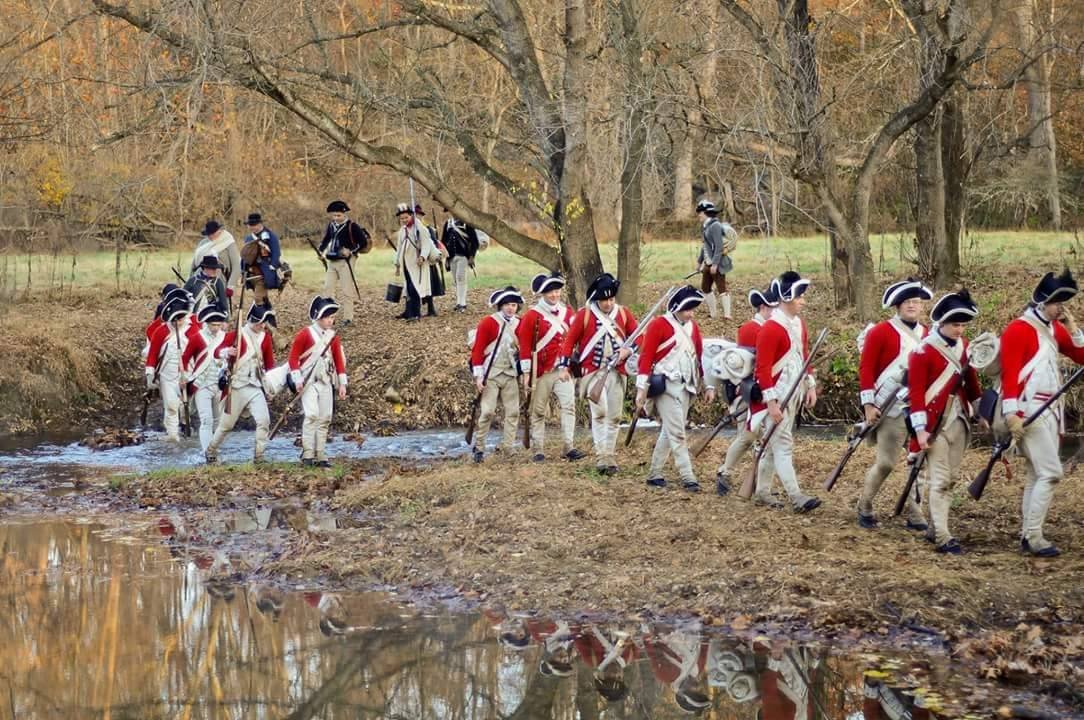
But for the 18th Century Soldier, be them Loyalist or Rebel, that was just another day in the war! And it was a VERY long war. The 17th landed in November of 1775. They didn’t leave America until 1783. Those that lived that is. And they didn’t see England and home again until 1787! So for 8 years the soldiers we represent endured wartime hardship. They endured day after day after monotonous day of picquets, patrols, work parties, long marches, and occasionally the absolute terror of battle. They endured starvation, discontentment, barbaric punishment, poor pay, a hostile or at least untrustworthy local population, and the number one killer of them all: disease. And may I add there was no retirement plan in the 18th century and very few men who applied for military pensions got them.
All this brings two questions to mind. The first is: how? How did they do it? Were they tougher people back in the 18th century? I don’t know. The modern soldier faces struggles not all that different today. Why didn’t they quit? Again I don’t know. Many many soldiers deserted throughout the war on both sides. Those that stayed might have feared the punishment that waits for the captured deserter. Some I’m sure were true believers in their respective causes. Many, I’m sure, didn’t quit because they didn’t want to leave their buddies. A military unit is a family, particularly in the 18th century where men can spend their entire military lives among the same men in the same unit.
My second question is what I asked myself when I reached the far bank of the creek. Could I do it? Could I have endured the service back then? Could you?
-Kyle Timmons, Corporal, 17th Regiment of Infantry
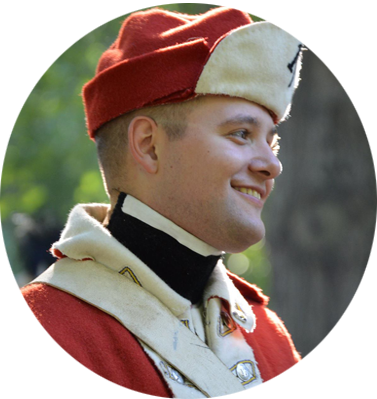
Kyle Timmonsis a long time reenactor, a Combat Medic in the PA National Guard, and currently an employee of the National Park Service. His wife and cat think he's pretty alright.

